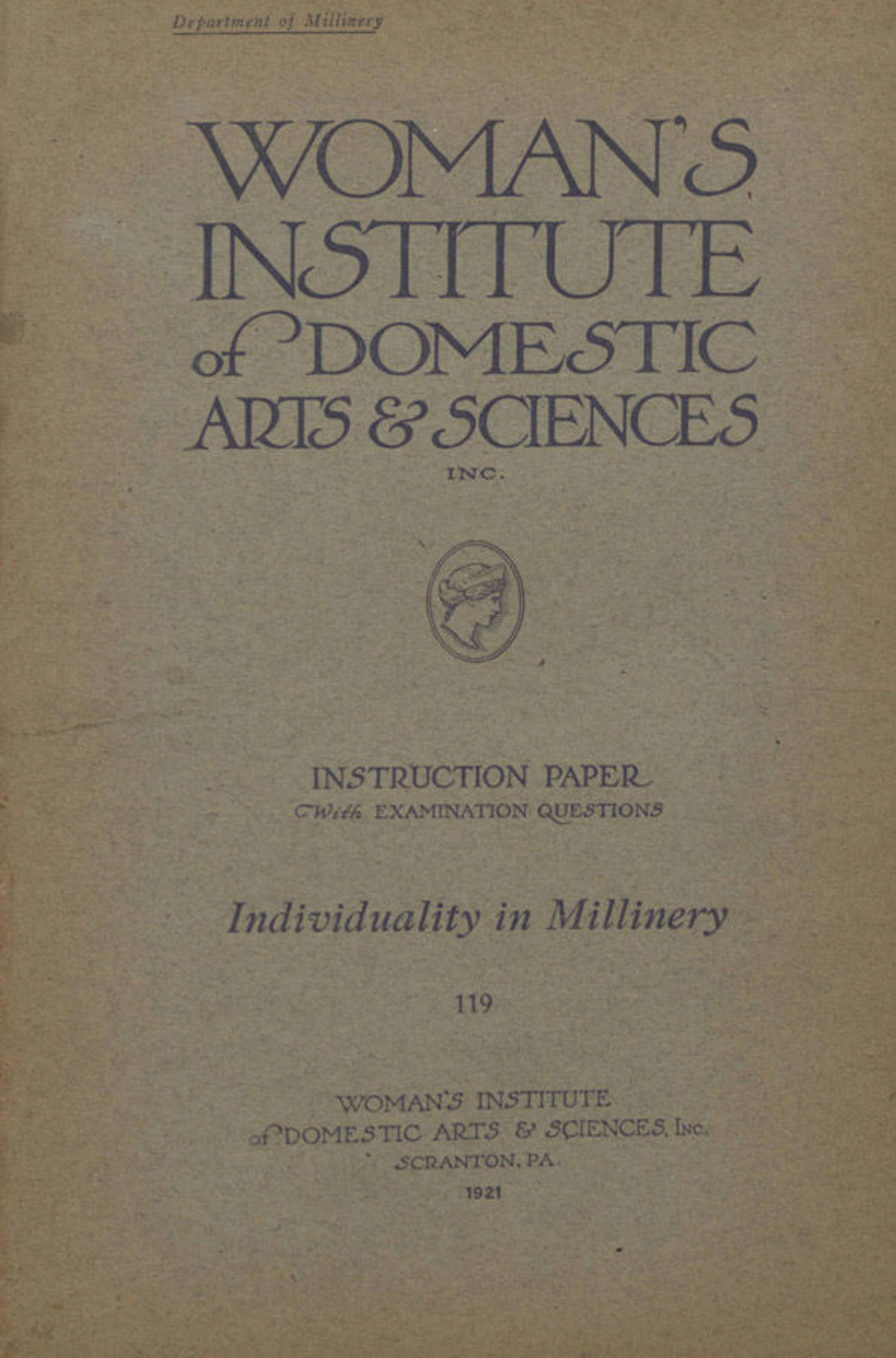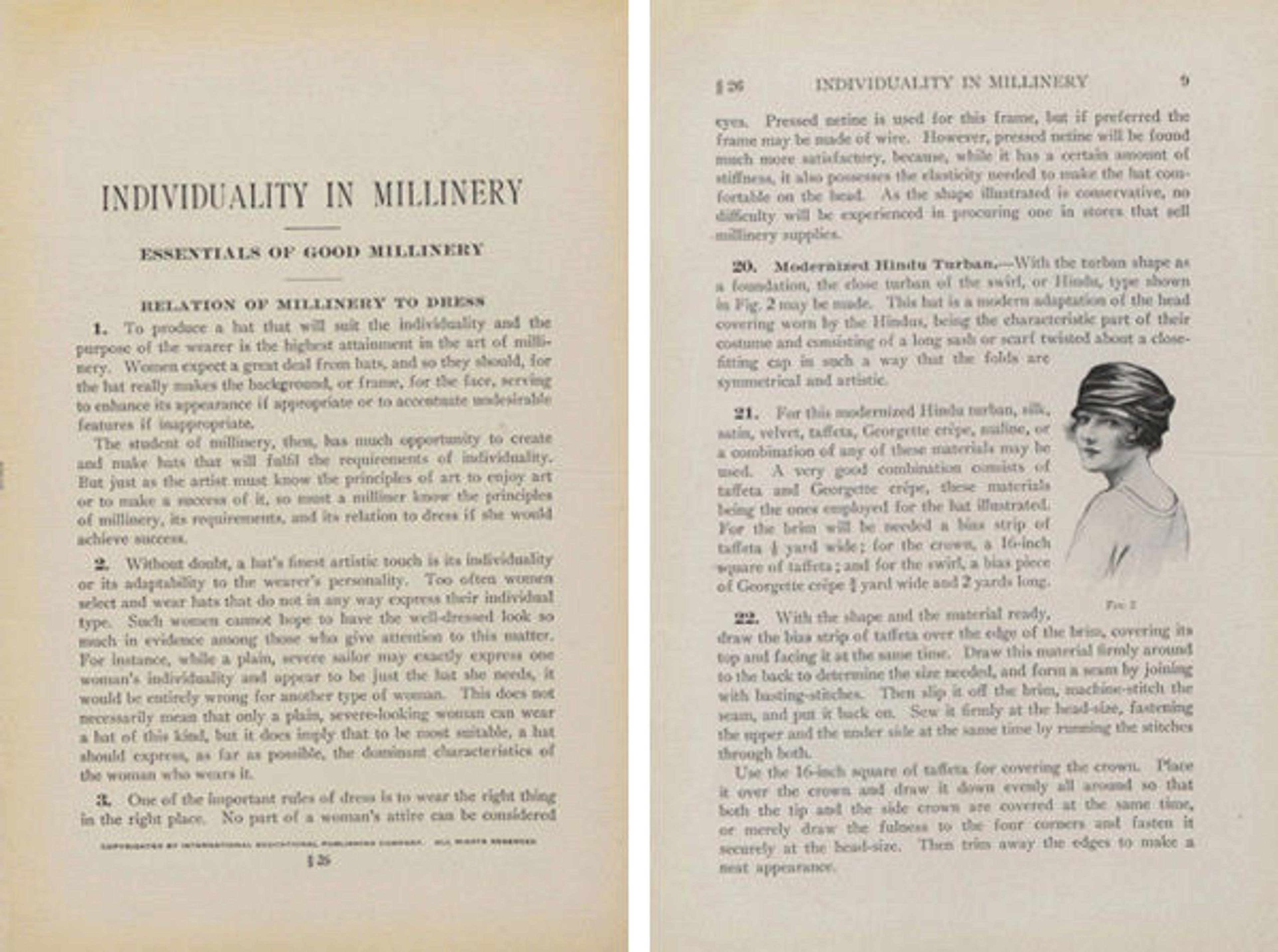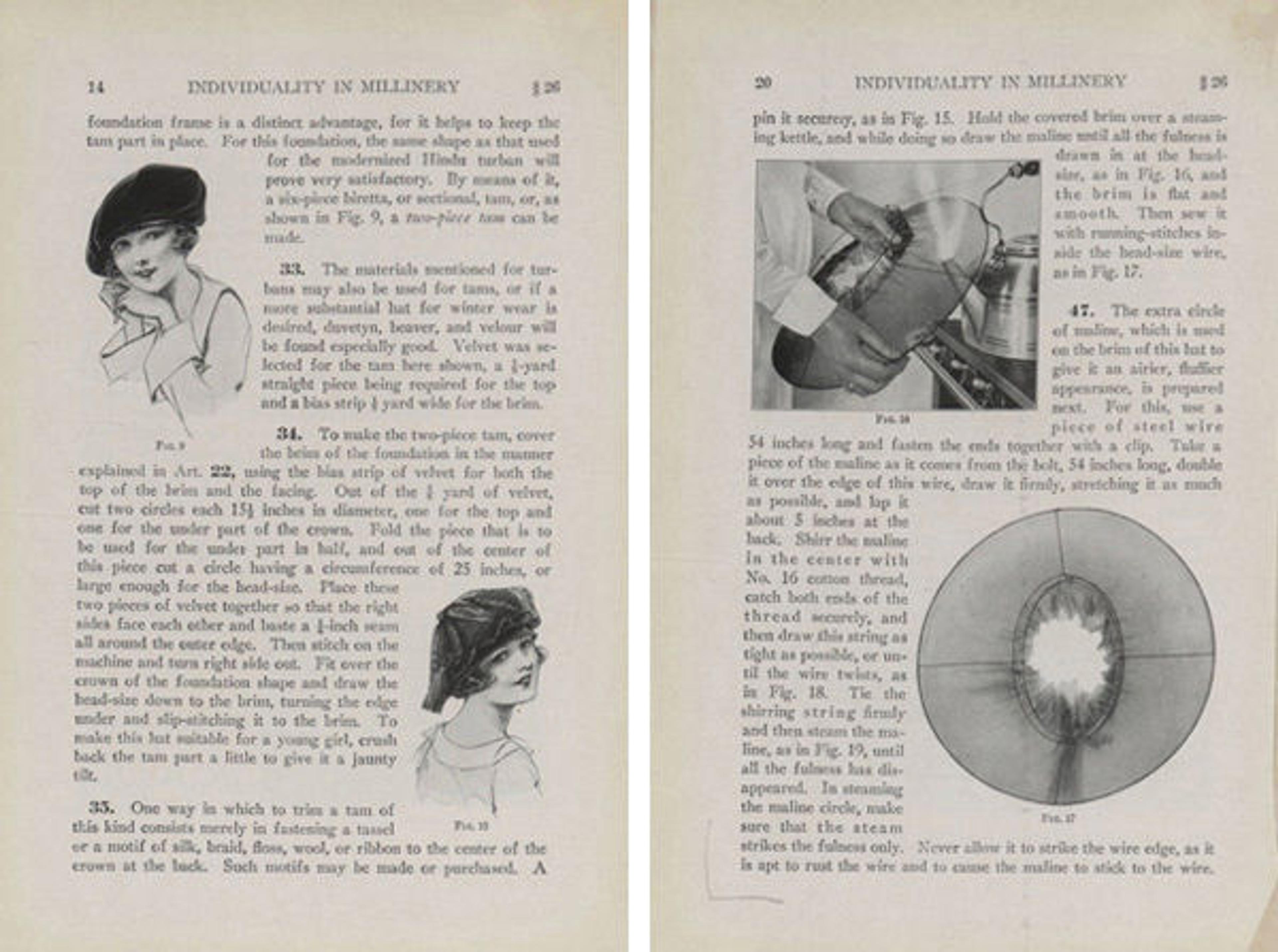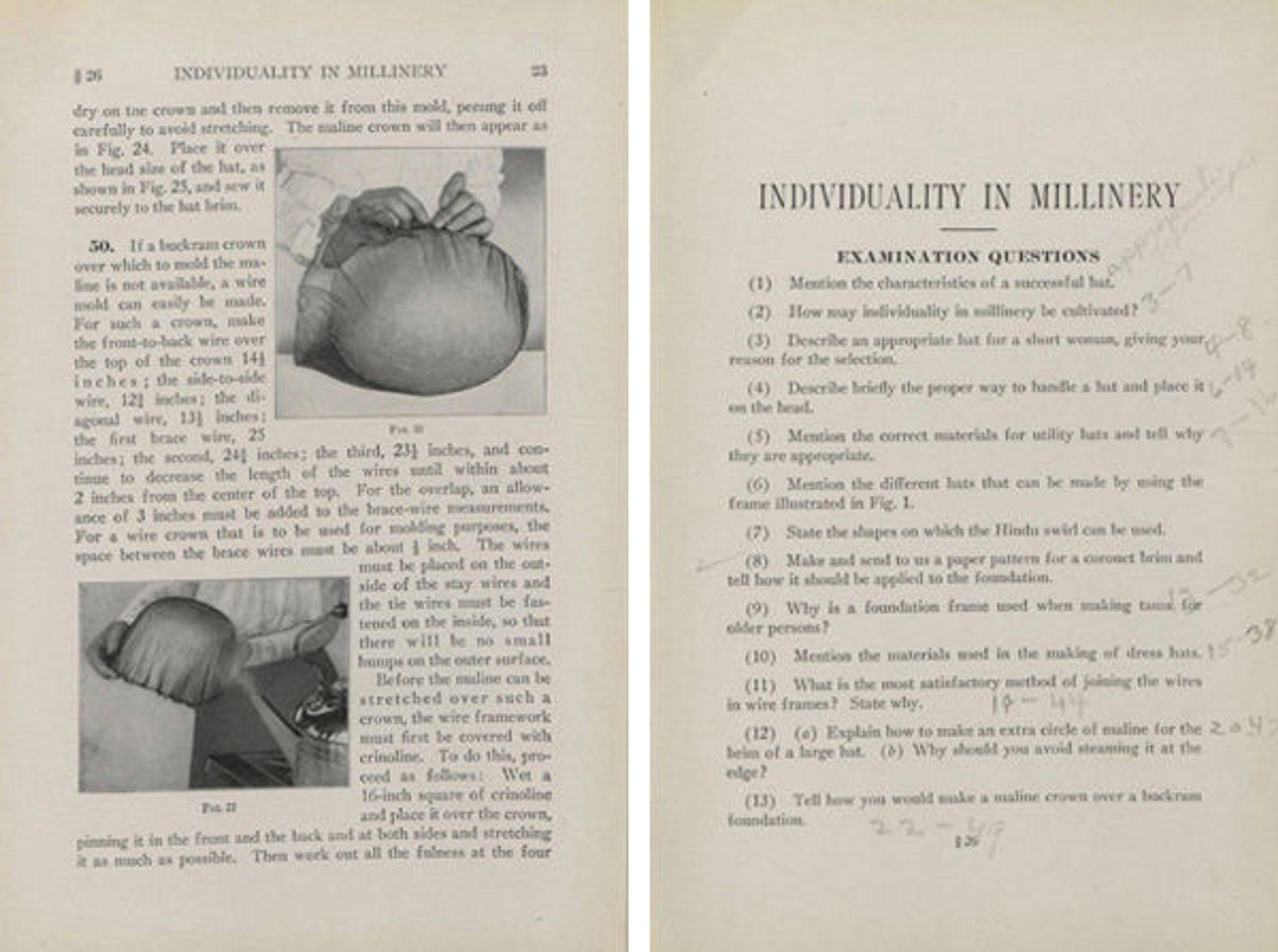
Cover of Individuality in Millinery
«The practice of millinery dates back to the early sixteenth century. Although hats have come in and out of fashion over the years, milliners, who make hats for women (hat makers make hats for men), have always been making hats that reflect the style and fashion of their culture. For example, in the 1920s, a close-fitting hat such as a cloche was made to show off a shorter hairstyle, which was becoming increasingly popular.»
Millinery wasn't only practiced by professionals—women could design and construct their own hats by using guides such asIndividuality in Millinery, which I recently digitized at the request of a researcher at the Rapides Parish Library in Alexandria, Louisiana. (Digitizing books on demand is a service we offer to readers all over the world, and I've written another blog post about it that you can read here.) This rare volume is owned by only three other libraries, so it is a valuable addition to our Digital Collections.
This book, written by Mary Brooks Picken, founder of the Women's Institute of Domestic Arts and Sciences, details the importance of designing hats that are appropriate for the wearer. On the first page of the book, Picken writes:
Too often women select and wear hats that do not in any way express their individual type. Such women cannot hope to have the well-dressed look so much in evidence among those who give attention to this matter.

Left: "Essentials of Good Millinery." Right: Example of a modernized Hindu turban
Picken's book is quite detailed, and she explains the relation of millinery to dress, the importance of millinery details, as well as different varieties of hats—including turbans, tams, and dress hats.
In addition to illustrations of hat types, the book includes several photographs of milliners shaping wire and maline to make the base of the hat. Picken shows that hats can be made with tools found around the home, such as a tea kettle, which can be used to properly shape the maline.

Left: The importance of a good hat. Right: Making a hat with a the help of a tea kettle
At the end of the book, Picken includes an exam with twenty questions to make sure that readers have gained an in depth understanding of the importance of creating hats. The former owner of Watson Library's copy clearly took advantage of this quiz, and has helped future students of millinery by indicating on what pages the answer to each question may be found.
In addition to being the founder of the Women's Institute of Domestic Arts and Sciences, Picken was a member of the Executive Committee of the Advisory Board of The Costume Institute here at The Metropolitan Museum of Art. We in Watson Library would like to think that she would be glad that ninety-three years after its publication, Individuality in Millinery has been digitized, making it available to new audiences around the world.

Left: Learning to make a hat. Right: Millinery examination questions
For those interested in learning more about women's domestic arts, several additional books by Picken are available as PDFs through the Internet Archive, including The Secrets of Distinctive Dress: Harmonious, Becoming and Beautiful Dress, Its Value and How to Achieve It; The One Hour Dress; and Dress and Look Slender.